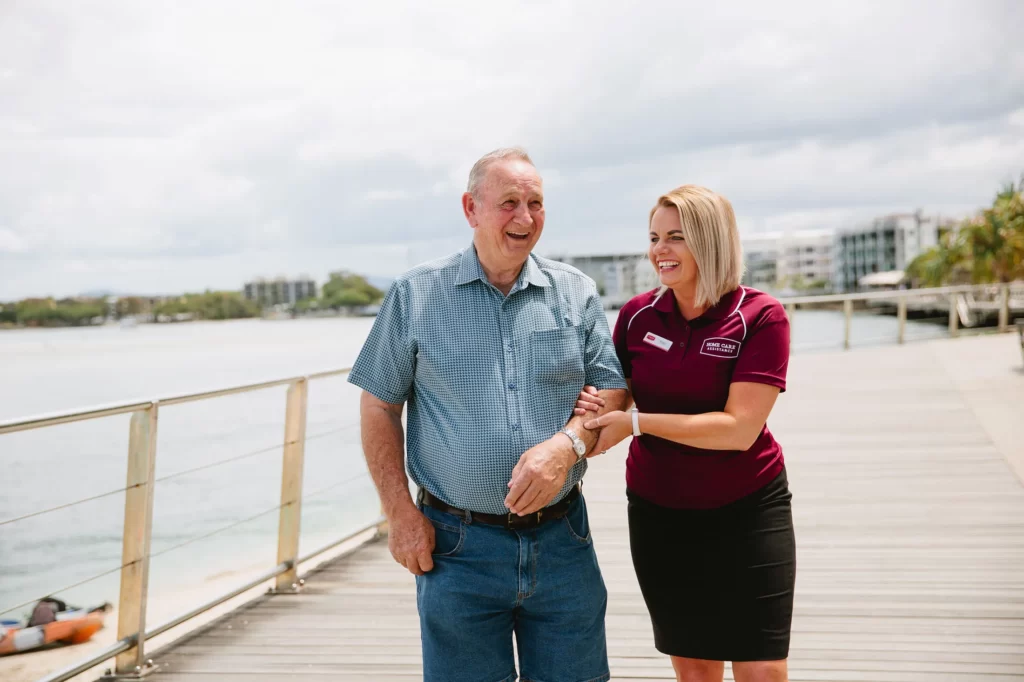Exercise has many amazing benefits. It is a fundamental pillar of healthy living, greatly impacts our mobility, and can even aid in pain management. When our health declines it can be scary and difficult to maintain an exercise regime, however moving our bodies in safe and supported ways can help us to maintain our mobility, improve our mental health and even increase our social ties.
Parkinson’s disease affects one in 100 over the age of 60, and there are currently over 219,000 Australians living with the disease. Below are some useful tips for people currently living with or supporting someone with Parkinson’s disease on how to keep moving and maintain their mobility at home. You can also find local exercise groups, including Falls Prevention Programs here.

Five Exercises for Parkinson’s Disease
Exercise 1 for Parkinson’s Disease – Aerobic
Recent research shows that -“aerobic exercise for 30 to 45 minutes for 3 times a week had an effect similar to that of several conventional Parkinson drugs in patients with mild severity”
So let’s get moving! You may need to adapt these exercises to your level of mobility, but any movement is great movement – walking is a phenomenal source of aerobic exercise. Please make sure you get medical clearance from your Doctor before commencing any new exercise program.
Here are some more aerobic examples
- Walking or running
- Swimming, walking in water, or water aerobics are great low-impact options
- Cycling, stationary biking, or a foot pedal exerciser
- Rowing or using a rowing machine
Exercise 2 for Parkinson’s Disease – Strength Training
Working towards your strength training allows you to build muscle mass, making it easier to perform everyday activities and maintain your balance. It’s worth engaging a physiotherapist oran exercise physiologist to support you in developing a program and to ensure you are doing the exercises safely.
Typically, a workout set should consist of 5-10 repetitions in over 3 sets.
For the best results, aim to work your bigger muscles, such as your leg muscles and your glutes rather than smaller muscle groups such as your biceps. Working large muscle groups will create more muscle mass and give you better stability.
Here are some examples :
Exercise 3 for Parkinson’s Disease – Balance
By maintaining your abilities balance and working on your core muscles you are directly reducing your risk of falling and injuring yourself.
These exercises are particularly relaxing and can often have major mental health benefits, in conjunction with preserving your independence at home.
- Tai chi
- Yoga (some places offer chair yoga for those with less mobility)
- Dance classes
- Pilates
- Boxing (non-contact)
You can do these activities in formal classes in the community, with a physiotherapist in your home, or online
Or you can begin with little exercises such as these:
Exercise 4 for Parkinson’s Disease – Co-Ordination and Mobility
A primary symptom of Parkinson’s Disease is its effect on your muscles, causing them to slow, and a decrease in size makes moving more difficult.
Walking and cycling help your lower body, but specifically for small motor movements:
- Pickups – picking up small objects keeps the agility in your fingers.
- Finger touch tips – as demonstrated below

Exercise 5 for Parkinson’s Disease – Cognition
And finally, the most important muscle – your brain!
As with your body, working your mind is another key element of happy healthy aging.
You could try reading aloud or doing crosswords and puzzles. Anything that makes you think works that wonderful muscle – and will keep you entertained!
These exercises are general in their application to Parkinson’s and given the variety in severity may not be applicable to all individuals please check with your health professional
